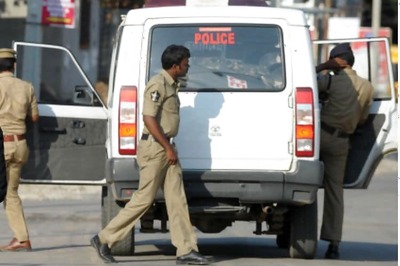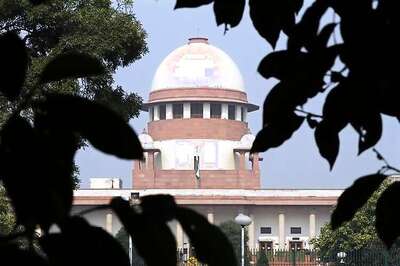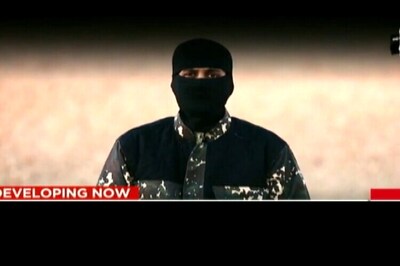
views
Just where one draws the line to stop the spread of the coronavirus. Or perhaps where all do governments draw the many lines that need to be drawn. All governments have faced those questions this year, but now they stand sharpest for Britain in the grip of a new strain of the virus.
A very large number of countries, including India, have banned flights from the UK, and the number of countries banning flights is rising all the time. To add to these lines in the air, road, sea and rail traffic from England into France and Belgium has also been restricted. The UK government has further drawn an internal line between what it calls Tier 4 areas – a lockdown except in name – in and around London.
Another has come up in effect between England and Scotland; in effect a Covid-19 border. The police have been deployed to stop travel between the two. Some parts of north England have marked their own lines to put in place 10-day quarantine for anyone travelling from London. Finally, invisible barriers now stand around every neighbourhood, around every home even.
And it’s still not clear just how protective these concentric circles of protection might be. Or whether some of these internal lines may be doing more harm than good. Prime Minister Boris Johnson is holding off a national lockdown while his health minister Matt Hancock has said the virus is now “out of control”. This offers a new round of evidence that the UK government has not been taking decisions that would seem logically in line with the information it has
The demand is arising, from leading scientific advisers, for a national lockdown across the UK. Boris Johnson has said repeatedly that he is keen to avoid that; it is with some visible reluctance that he withdrew the allowance for up to three families to spend five days together over Christmas.
That planned Christmas easing has been cancelled now for areas in a lockdown, and curtailed for the rest. But given the fast spreading virus, a late lockdown could turn out to be yet another move from the government that may well come too late.
By one account, the spread of the new strain of the virus is 70 percent faster. That is an uncertain number, grabbed from one estimate primarily because everyone wants these matters slotted and quantified. Chief Scientific Officer to the government Patrick Vallance said on Monday evening that experts have “high confidence” that the new strain is spreading more readily, but added that no one knows yet just how much faster the new strain is spreading.
With the Prime Minister standing by his side, he said the government will have to move quickly to get a grip on the virus and not “watch it and react in retrospect.”
Dubious Reassurance
Labs across UK are examining the new mutation of the virus minutely, and constantly. For now, the official word is a double reassurance that arises from double negatives. One, we have been told that there is no reason to believe that the new strain is more dangerous only because it spreads faster. Two, that there is no reason to believe that the vaccines approved already will not offer protection against the new variant.
That the new variant is a danger in that it spreads faster and not because it is inherently more dangerous is of course worrying enough. It offers little consolation to the very vulnerable in the firing line to be offered a reassurance that there are two guns pointing at them, not one, that the second one fires faster, but that it is the same kind of gun.
The virus is of course not a gun for most, who recover naturally from the virus if they develop any symptoms at all. But after 1.7 million deaths and counting, the new strain is inevitably making the existing threat to the vulnerable yet more lethal.
By way of protection, Britain has so far inoculated half a million people with the first does of the Pfizer vaccine. The second dose for them is due to follow three weeks after the first jab, and immunity is expected to kick in a week following that.
Britain has ordered enough of the Pfizer vaccine to inoculate 20 million people. It’s being shipped to Britain from its production centre in Belgium, but some delays have meant that the vaccination is going slower than planned.
Britain has additionally ordered enough of the Moderna vaccine to inoculate 3.5 million. Between them they could protect a very sizeable part of the population of the U.K’s 67 million people. The Medicines and Healthcare products Regulatory Authority (MHRA) is still considering an application for approval of the Oxford vaccine.
The government expects it will be late March before the vaccination is completed. Accordingly, Boris Johnson has promised Britain a great Easter because it can’t have a great Christmas. Easter, he suggests ought to bring freedom from the virus and the fruits of Brexit. Not everyone feels as confident as he sounds. Boris Johnson has built up quite a track record this year of making promises and not delivering on them.
Read all the Latest News, Breaking News and Coronavirus News here




















Comments
0 comment